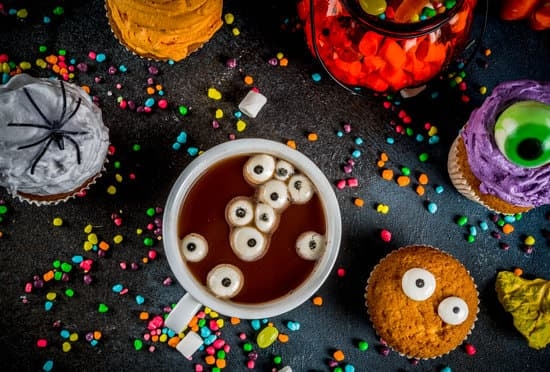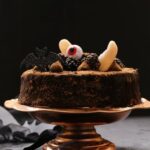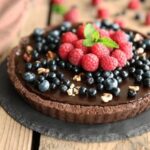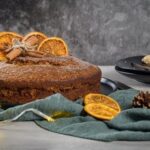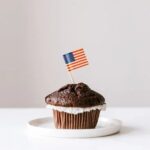Cake decorating is an art form that adds a touch of creativity and elegance to any baked creation. From birthday celebrations to wedding receptions, a beautifully decorated cake can steal the show. But what cake decorating tips make what difference in achieving that picture-perfect dessert? The answer lies in understanding the importance of using the right techniques and tools to elevate your cake decorating skills.
The selection of the right cake decorating tools plays a crucial role in achieving professional-looking results. From offset spatulas to piping bags, having the essential tools at your disposal can make all the difference in creating intricate designs and smooth finishes. Additionally, choosing the perfect frosting is key to bringing your vision to life. Whether you prefer buttercream or fondant, knowing how to select the right frosting for your design can make or break the final outcome.
To create flawless finishes and stunning designs, mastering various techniques is essential. Whether it’s creating intricate lace patterns with royal icing or using fondant molds for detailed decorations, honing your skills will elevate your cake decorating game.
Furthermore, understanding color coordination and how to troubleshoot common issues are essential aspects of perfecting your craft. By staying informed on creative trends and incorporating them into your designs, you can stay ahead of the curve in the dynamic world of cake decorating.
Selection of the Right Cake Decorating Tools
Cake decorating is an art that requires precision, creativity, and the right tools. The selection of the right cake decorating tools can make a significant difference in the outcome of your masterpiece. Whether you are a beginner or an experienced baker, having the essential tools on hand is crucial for successful cake decorating. Here are some must-have tools for anyone looking to create beautifully decorated cakes:
- Piping bags and tips: These are essential for creating intricate designs and decorations on cakes.
- Offset spatula: Ideal for spreading frosting smoothly and achieving clean lines on cakes.
- Fondant smoother: Helps to create a flawless finish when working with fondant or gum paste.
- Cake turntable: Allows you to easily rotate your cake while decorating, ensuring even coverage of frosting and smooth finishes.
When it comes to selecting the right cake decorating tools, quality matters. Investing in high-quality tools will not only make your decorating process easier but also result in professional-looking cakes. Remember that each tool serves a specific purpose in cake decorating and having the right ones at your disposal can elevate your creations to the next level.
In addition to these basic tools, consider adding specialty items such as edible markers, stencils, and texture mats to your collection. Experimenting with different tools and techniques can help unleash your creativity and take your cake decorating skills to new heights. With the right tools in hand, you’ll be well-equipped to bring your artistic visions to life on every cake you decorate.
Choosing the Perfect Frosting
When it comes to cake decorating, choosing the right frosting can truly make or break your final masterpiece. The type of frosting you use can significantly impact the overall taste, texture, and appearance of your cake.
Whether you prefer a light and fluffy buttercream, a glossy ganache, or a smooth fondant, it’s essential to select the perfect frosting that suits your needs. Here are some tips on different types of frostings and how to decide which one is right for your cake.
Buttercream Frosting
Buttercream is a classic choice for cake decorating due to its versatility and smooth texture. It can be easily flavored and colored to suit any theme or occasion. Buttercream is ideal for creating intricate designs with piping techniques and can be used for both crumb coating and final decorations. To achieve a silky smooth buttercream, ensure that your butter is softened but not melted before mixing in powdered sugar gradually.
Fondant
Fondant is a popular choice for creating sleek and professional-looking cakes. This pliable icing can be rolled out into thin sheets and draped over cakes for a flawless finish. Fondant provides a blank canvas for intricate designs and 3D decorations. However, some may find the taste too sweet or dislike the chewy texture. If using fondant, make sure to knead it well before rolling it out and cover your cake flawlessly to avoid air bubbles.
Ganache
Ganache is a decadent mixture of chocolate and heavy cream that results in a rich and glossy frosting perfect for glazing cakes or creating smooth finishes. Ganache sets beautifully when chilled, making it ideal for drip cakes or creating sharp edges on tiered cakes.
For a pourable ganache, heat the cream until simmering before pouring it over chopped chocolate; let it sit briefly before stirring until smooth. Using different ratios of cream to chocolate will result in different consistencies suitable for various decorating techniques.
By understanding the characteristics of different frostings and how they interact with various cake types, you can choose the perfect frosting that complements your flavor preferences while achieving stunning visual results in your cake decorating endeavors. Experimenting with different frostings will help you discover what works best for your desired outcomes while honing your skills as a talented cake decorator.
Techniques for Creating Smooth Finishes
Creating a smooth finish on your cake is essential for achieving a professional and polished look. One of the key cake decorating tips that can help you achieve this is to start with a crumb coat. A crumb coat is a thin layer of frosting applied to the cake before adding the final layer of frosting.
This helps to trap any loose crumbs and create a smooth base for the final frosting. Using a bench scraper or offset spatula, smooth out the crumb coat evenly before adding the final layer of frosting.
Another important tip for creating smooth finishes on cakes is to work with the right consistency of frosting. If your frosting is too thick, it can be difficult to spread smoothly and may result in an uneven finish.
On the other hand, if the frosting is too thin, it may not hold its shape and could slide off the cake. To achieve the perfect consistency, adjust the amount of liquid or powdered sugar in your frosting recipe until you reach a spreadable but firm texture.
Using a turntable while decorating your cake can also make a significant difference in achieving smooth finishes. A turntable allows you to easily rotate the cake as you frost it, making it easier to reach all sides evenly and creating a seamless finish. Additionally, using an icing smoother or offset spatula can help you achieve clean edges and sharp angles on your cake decorations.
| Cake Decorating Tip | Importance |
|---|---|
| Start with a crumb coat | Creates a smooth base for final frosting |
| Work with right consistency of frosting | Achieves even spread without sliding off |
| Use turntable and icing smoother | Allows for even distribution and clean edges |
Creating Intricate Designs
Cake decorating is an art form that allows bakers to express their creativity and transform a simple dessert into a work of art. One of the key elements in creating visually appealing cakes is mastering intricate designs using piping techniques and other decorative tools. Whether you’re a beginner or a seasoned baker, knowing the right cake decorating tips can make a huge difference in the final result.
Here are some essential tips for creating stunning designs on your cakes:
- Invest in quality piping tips: Quality piping tips are essential for creating intricate designs with ease. Start with a basic set of round, star, and petal tips, and gradually expand your collection as you gain more experience.
- Practice proper hand positioning: Proper hand positioning is crucial for achieving precision when piping intricate designs. Hold the piping bag at a 45-degree angle and apply even pressure to create consistent lines and shapes.
- Experiment with different textures: Don’t be afraid to experiment with different textures and patterns to add depth and visual interest to your cake decorations. Try using different piping techniques such as ruffles, rosettes, and lace patterns to elevate your design.
By incorporating these cake decorating tips into your baking routine, you’ll be able to create beautiful and professional-looking designs that will impress both yourself and your guests. Remember, practice makes perfect, so don’t be discouraged if your first attempts aren’t flawless. With time and dedication, you’ll develop the skills needed to take your cake decorating game to the next level.
Importance of Color Coordination
Color coordination plays a crucial role in cake decorating, as it can greatly impact the overall look and appeal of your creation. When choosing the right color scheme for your cake decorations, it is important to consider factors such as the theme of the event, personal preferences, and current trends.
One key tip is to start by selecting a primary color that will serve as the base for your design. This primary color will set the tone for the rest of your decorations.
Another important aspect to consider when coordinating colors for cake decorating is to think about contrast and balance. A good rule of thumb is to use a mix of light and dark shades to create visual interest and depth in your design. For example, if you have a deep red as your primary color, consider using lighter shades like pink or white as accents to balance out the overall look.
Furthermore, don’t be afraid to experiment with different color combinations and techniques to achieve the desired effect. You can use color wheels or online resources to help you understand which colors complement each other well.
Remember, practice makes perfect when it comes to color coordination in cake decorating, so don’t be discouraged if your first attempts are not exactly what you envisioned. With time and experience, you will become more confident in creating beautifully coordinated cakes that are sure to impress any audience.
| Tip | Benefit |
|---|---|
| Start with a primary color | Sets the tone for the rest of your decorations |
| Use contrast and balance | Creates visual interest and depth in design |
| Experiment with different combinations | Helps develop skills and confidence in color coordination |
Troubleshooting Common Cake Decorating Issues
Crumbs in the Frosting
One common issue that many cake decorators face is crumbs getting mixed into the frosting, creating a bumpy and unprofessional finish. To avoid this, make sure to crumb coat your cake before applying the final layer of frosting.
A crumb coat is a thin layer of frosting that locks in any loose crumbs, allowing for a smoother finish on the final layer. Additionally, using a bench scraper or offset spatula to spread the frosting in smooth, even strokes can help prevent crumbs from mixing in.
Air Bubbles in Piping Bag
Another frustrating problem that can arise during cake decorating is air bubbles forming in your piping bag, leading to inconsistent designs and frustrating interruptions. To prevent this, gently tap the filled piping bag on the countertop and then squeeze out a small amount of frosting before starting to pipe.
This will help release any trapped air bubbles and ensure a steady flow of frosting for your decorations. Additionally, make sure to twist the top of the piping bag securely to prevent air from entering while you work.
Runny Frosting
Dealing with runny frosting can be a challenge when trying to create intricate designs or smooth finishes on a cake. If your frosting is too runny, try adding more confectioners’ sugar gradually until you reach the desired consistency.
Conversely, if your frosting is too thick, you can thin it out with small amounts of milk or cream until it reaches the right texture for decorating. It’s essential to find the right balance between thickness and spreadability for successful cake decorating results.
Creative Cake Decorating Trends
Cake decorating is an art form that requires skill, patience, and creativity. Whether you are a beginner or a seasoned baker, knowing the right cake decorating tips can make a significant difference in the final outcome of your creation. From selecting the right tools and frosting to mastering techniques for creating smooth finishes and intricate designs, each step plays a crucial role in achieving a visually appealing and delicious cake.
One of the key factors in staying current with cake decorating is keeping up with the latest trends. Creative cake decorating trends evolve constantly, offering new ideas and techniques to explore. From minimalist designs to vibrant color schemes, there are endless possibilities to incorporate these trends into your own designs. Experimenting with different styles and incorporating unique elements can help elevate your cakes to the next level.
In conclusion, understanding what cake decorating tips make what can help you achieve professional-looking results that will impress your family and friends. By mastering the selection of tools, choosing the perfect frosting, using techniques for smooth finishes, creating intricate designs, coordinating colors effectively, troubleshooting common issues, and exploring creative trends, you can elevate your cake decorating skills and create stunning masterpieces that not only look beautiful but also taste delightful.
So don’t be afraid to experiment with new ideas and techniques – let your creativity shine through in every cake you decorate.
Frequently Asked Questions
What Do Different Cake Decorating Tips Do?
Different cake decorating tips serve various purposes when it comes to creating beautiful designs on cakes. For example, a round tip is commonly used for writing or outlining, while a star tip can create stars or rosettes on the cake. Leaf tips are perfect for making realistic-looking leaves, and petal tips can be used to create flower petals.
Which Piping Nozzle Makes Which Shape?
Piping nozzles come in different shapes and sizes, each producing a unique design when used. For instance, a round piping nozzle creates circular shapes or outlines, while a star-shaped nozzle produces detailed star designs on the surface of the cake. Leaf-shaped nozzles are ideal for making intricate leaf patterns, and petal nozzles can help form delicate floral petals.
What Are the 7 Different Cake Decorating Techniques?
There are seven primary cake decorating techniques that bakers often use to enhance the appearance of their creations. These techniques include layering and stacking cakes to create multi-tiered designs, piping intricate patterns using icing or frosting, applying fondant to achieve a smooth finish, using stencils for precise decorations, creating edible sugar flowers for an elegant touch, painting directly on the cake with food coloring for artistic details, and incorporating textures like ruffles or swirls for added visual interest.
Each technique requires skill and practice but can result in stunning decorative finishes that elevate the overall look of the cake.

Welcome to our cake decorating blog! My name is Destiny Flores, and I am the proud owner of a cake decorating business named Cake Karma. Our mission is to provide delicious, beautiful cakes for all occasions. We specialize in creating custom cakes that are tailored specifically to each customer’s individual needs and tastes.

